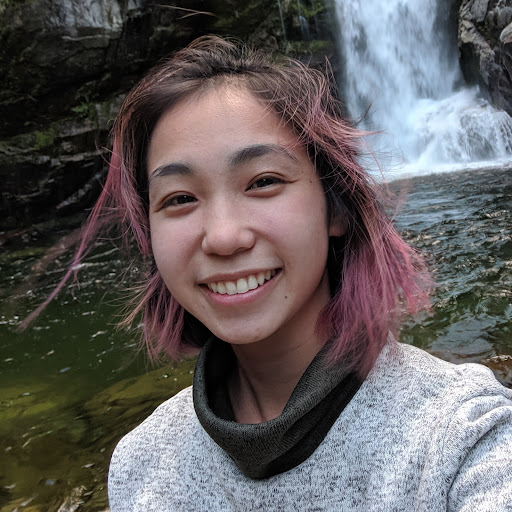Anne C Kao
age ~78
from Bellevue, WA
- Also known as:
-
- Anne Ko
- Ann E Ko
- Phone and address:
-
2905 129Th Ave NE #AV, Bellevue, WA 98005
4258984993
Anne Kao Phones & Addresses
- 2905 129Th Ave NE #AV, Bellevue, WA 98005 • 4258984993
- Milpitas, CA
- 17635 Adena Ln, San Diego, CA 92128
- 8608 Peyton Randolph Dr, Charlotte, NC 28277 • 7048468002
- 9315 Rainbow Forest Dr, Charlotte, NC 28277
- 13007 Edina Way, Poway, CA 92064
- San Angelo, TX
- Cupertino, CA
Resumes

Senior Technical Fellow
view sourceLocation:
421 Sandhurst Dr, Milpitas, CA 95035
Industry:
Aviation & Aerospace
Work:
University of California, San Diego 1984 - 1990
Lecturer, Instructor
Northrop Grumman Corporation 1988 - 1990
Software Engineer
San Diego Mesa College 1984 - 1990
Instructor
Boeing 1984 - 1990
Senior Technical Fellow
Lecturer, Instructor
Northrop Grumman Corporation 1988 - 1990
Software Engineer
San Diego Mesa College 1984 - 1990
Instructor
Boeing 1984 - 1990
Senior Technical Fellow
Education:
San Diego State University 1986 - 1989
San Diego State University 1984 - 1988
Master of Science, Masters, Computer Science Elementary
National Chengchi University
Bachelors, Bachelor of Arts, Philosophy Chinese Culture University
Doctorates, Masters, Master of Arts, Doctor of Philosophy, Philosophy
San Diego State University 1984 - 1988
Master of Science, Masters, Computer Science Elementary
National Chengchi University
Bachelors, Bachelor of Arts, Philosophy Chinese Culture University
Doctorates, Masters, Master of Arts, Doctor of Philosophy, Philosophy
Skills:
Natural Language Processing
Text Mining
Artificial Intelligence
Computer Science
Systems Engineering
Software Engineering
Text Analytics
Information Retrieval
Machine Learning
Data Mining
System Architecture
Knowledge Management
Social Network Analysis
Algorithms
Aerospace
Program Management
Software Development
Programming
Distributed Systems
Big Data
Engineering Management
Human Computer Interaction
Data Analysis
Link Analysis
Simulations
Visual Analytics
Predictive Analytics
Earned Value Management
System Design
Configuration Management
Requirements Management
Technical Leadership
Object Oriented Design
Perl
Software Design
High Performance Computing
Semantic Web
Image Processing
Optimization
Scalability
Operations Research
Avionics
Hadoop
Algorithm Design
Lisp
Enterprise Architecture
Mathematical Modeling
Space Systems
Text Mining
Artificial Intelligence
Computer Science
Systems Engineering
Software Engineering
Text Analytics
Information Retrieval
Machine Learning
Data Mining
System Architecture
Knowledge Management
Social Network Analysis
Algorithms
Aerospace
Program Management
Software Development
Programming
Distributed Systems
Big Data
Engineering Management
Human Computer Interaction
Data Analysis
Link Analysis
Simulations
Visual Analytics
Predictive Analytics
Earned Value Management
System Design
Configuration Management
Requirements Management
Technical Leadership
Object Oriented Design
Perl
Software Design
High Performance Computing
Semantic Web
Image Processing
Optimization
Scalability
Operations Research
Avionics
Hadoop
Algorithm Design
Lisp
Enterprise Architecture
Mathematical Modeling
Space Systems
Interests:
Science and Technology
Duplicate Bridge
Duplicate Bridge
Languages:
Mandarin

Anne Kao
view source
Anne Kao
view source
Technical Fellow At Boeing Phantom Works
view sourcePosition:
Technical Fellow at Boeing Phantom Works
Location:
Greater Seattle Area
Industry:
Aviation & Aerospace
Work:
Boeing Phantom Works
Technical Fellow
Technical Fellow
Education:
San Diego State University-California State University 1986 - 1989
Us Patents
-
Methods, Apparatus And Computer Program Products For Information Retrieval And Document Classification Utilizing A Multidimensional Subspace
view source -
US Patent:6701305, Mar 2, 2004
-
Filed:Oct 20, 2000
-
Appl. No.:09/693114
-
Inventors:Fredrick Baden Holt - Seattle WA
Anne Shu-Wan Kao - Bellevue WA
Daniel John Pierce - Woodinville WA
Stephen Robert Poteet - Bellevue WA
Yuan-Jye Wu - Issaquah WA -
Assignee:The Boeing Company - Seattle WA
-
International Classification:G06F 1700
-
US Classification:706 45, 706 12, 706 46
-
Abstract:Methods, apparatus and computer program products are provided for retrieving information from a text data collection and for classifying a document into none, one or more of a plurality of predefined classes. In each aspect, a representation of at least a portion of the original matrix is projected into a lower dimensional subspace and those portions of the subspace representation that relate to the term(s) of the query are weighted following the projection into the lower dimensional subspace. In order to retrieve the documents that are most relevant with respect to a query, the documents are then scored with documents having better scores being of generally greater relevance. Alternatively, in order to classify a document, the relationship of the document to the classes of documents is scored with the document then being classified in those classes, if any, that have the best scores.
-
Text Differentiation Methods, Systems, And Computer Program Products For Content Analysis
view source -
US Patent:7403932, Jul 22, 2008
-
Filed:Jul 1, 2005
-
Appl. No.:11/173600
-
Inventors:Anne S-W Kao - Bellevue WA, US
Stephen R. Poteet - Bellevue WA, US
Yuan-Jye Wu - Issaquah WA, US
William Ferng - Sammamish WA, US
Robert E. Cranfill - Seattle WA, US -
Assignee:The Boeing Company - Chicago IL
-
International Classification:G06N 5/00
-
US Classification:706 45, 706 47
-
Abstract:Provided are improved methods, apparatus, and computer program products for text differentiation which involves identifying differences between documents with similar content, not merely similar terms, and generating results. Text differentiation provides the ability to find non-similar, or different, content hidden within documents with similar overall content, but not exactly the same content. Text differentiation may be used to quickly identify key differences between similar documents.
-
Query-Based Text Summarization
view source -
US Patent:7752204, Jul 6, 2010
-
Filed:Nov 18, 2005
-
Appl. No.:11/281499
-
Inventors:Anne S-W Kao - Bellevue WA, US
Stephen R. Poteet - Bellevue WA, US
Yuan-Jye Wu - Issaquah WA, US
William Ferng - Sammamish WA, US
Robert E. Cranfill - Seattle WA, US -
Assignee:The Boeing Company - Chicago IL
-
International Classification:G06F 7/00
G06F 17/30 -
US Classification:707736, 707772, 707917, 715254
-
Abstract:A text summarizer identifies relevant terms in a document, weights the terms and extracts one or more segments to produce a summary or abstract. The various terms in a particular are weighted in relation to an existing document collection. A term weight computer computes term weights for terms in the document, and a threshold comparator compares the term weights to determine if the corresponding terms are relevant to the document collection. Next, a term weight summer adds the term weights for each occurrence of each relevant term in the various segments of the document, and a summation comparator compares the summations to identify a text summarization segment representative of the document. Optionally, relevant terms can be highlighted in the term summarization segment.
-
Text Summarization Method And Apparatus Using A Multidimensional Subspace
view source -
US Patent:7831597, Nov 9, 2010
-
Filed:May 4, 2006
-
Appl. No.:11/417196
-
Inventors:Yuan-Jye Wu - Issaquah WA, US
Anne S-W Kao - Bellevue WA, US
Stephen R. Poteet - Bellevue WA, US
William Ferng - Sammamish WA, US
Robert E. Cranfill - Seattle WA, US -
Assignee:The Boeing Company - Chicago IL
-
International Classification:G06F 7/00
G06F 17/30 -
US Classification:707736, 707772, 707917, 715254
-
Abstract:A text summarizer identifies relevant terms in a document, weights the terms and extracts one or more segments to produce a summary or abstract. The various terms in a particular are weighted in relation to an existing document collection. A term weight computer computes term weights for terms in the document, and a threshold comparator compares the term weights to determine if the corresponding terms are relevant to the document collection. Next, a term weight summer adds the term weights for each occurrence of each relevant term in the various segments of the document, and a summation comparator compares the summations to identify a text summarization segment representative of the document. Optionally, relevant terms can be highlighted in the term summarization segment.
-
Streaming Text Data Mining Method And Apparatus Using Multidimensional Subspaces
view source -
US Patent:8234279, Jul 31, 2012
-
Filed:Oct 11, 2005
-
Appl. No.:11/246195
-
Inventors:Yuan-Jye Wu - Issaquah WA, US
Anne S-W Kao - Bellevue WA, US
Stephen R. Poteet - Bellevue WA, US
William Ferng - Sammamish WA, US
Robert E. Cranfill - Seattle WA, US -
Assignee:The Boeing Company - Chicago IL
-
International Classification:G06F 7/00
G06F 17/00 -
US Classification:707737, 707736, 707739, 706 45
-
Abstract:A streaming text data comparator performs real-time text data mining on streaming text data. The comparator receives a streaming text data document and generates a vector representation of the term frequencies relating to an existing document collection. The comparator then transforms the term frequency vector into a projection in a precomputed multidimensional subspace that represents the original document collection. The comparator further calculates a relationship value representing the similarities or differences between the vector representation and the subspace, and compares the relationship value to a predetermined threshold to determine whether the streaming text data document is related to the original document collection. If the streaming text data document is related, the streaming text data comparator intercalates the new document into the document collection. If the new document is not related, the comparator may store or delete the unrelated document.
-
Automated Rule Generation For A Secure Downgrader
view source -
US Patent:8272064, Sep 18, 2012
-
Filed:Nov 16, 2005
-
Appl. No.:11/280610
-
Inventors:Anne S-W Kao - Bellevue WA, US
Stephen R. Poteet - Bellevue WA, US
Nicholas J. Multari - Snoqualmie WA, US -
Assignee:The Boeing Company - Chicago IL
-
International Classification:H04L 29/06
-
US Classification:726 27
-
Abstract:A system generates rules for classifying documents are generated by building a vocabulary of features (e. g. , words, phrases, acronyms, etc. ) that are related to classifying concepts. The system includes a security document reader receives a security document that defines security concepts for a particular project and parses the security document to separate the security concepts. A vocabulary builder receives samples provided by the user that contain information related to the project. For each security concept, the vocabulary builder uses statistical analysis techniques to find features in the samples that are related to that concept. A rule generation assistant, for each security concept, generates rules based on the built vocabulary and the samples. The rule generation assistant uses statistical analysis techniques on the vocabulary and samples to determine features that optimally predict a particular concept. The rules can be used by a downgrader to process information to be distributed.
-
Automated Analysis And Summarization Of Comments In Survey Response Data
view source -
US Patent:8577884, Nov 5, 2013
-
Filed:May 13, 2008
-
Appl. No.:12/119697
-
Inventors:Stephen R. Poteet - Bellevue WA, US
Anne Kao - Bellevue WA, US
Shan Luh - Kenmore WA, US -
Assignee:The Boeing Company - Chicago IL
-
International Classification:G06F 17/30
-
US Classification:707737, 707738, 707776
-
Abstract:Technologies are described herein for providing automated analysis and summarization of free-form comments in survey response data. A number of topic words are identified from the survey response comments, and a numeric weight is calculated for each topic word that reflects the relevance of the topic word to each comment. Each topic word is associated with one or more topics and the comments relevant to each topic is then determined based on the weights of the associated topic words in each comment. A report is generated which summarizes the topics and their relative importance in the survey response comments based upon the number of comments relevant to each.
-
Methods And Framework For Constraint-Based Activity Mining (Cmap)
view source -
US Patent:8046322, Oct 25, 2011
-
Filed:Aug 7, 2007
-
Appl. No.:11/835225
-
Inventors:Changzhou Wang - Bellevue WA, US
Anne Kao - Bellevue WA, US
Jai J. Choi - Sammamish WA, US
Rodney A. Tjoelker - Bellevue WA, US -
Assignee:The Boeing Company - Chicago IL
-
International Classification:G06F 17/30
G06F 17/00 -
US Classification:706 48, 707776, 707756, 707778, 707792, 707796, 707694
-
Abstract:A method of mining data to discover activity patterns within the data is described. The method includes receiving data to be mined from at least one data source, determining which of a number of specified interests and constraints are associated with the mining process, selecting corresponding mining agents that combine search algorithms with propagators from the specified constraints, and finding any activity patterns that meet the specified interests and constraints.
Myspace
Youtube
Other Social Networks

anne Kao Google+
view sourceNetwork:
GooglePlus
anne Kao. anne Kao's profile photo anne Kao - Post date: 2011-07-22 - Public. google+. +1. 1 comments from Deepen Liao. 0 older comments ...
Googleplus

Anne Kao
Education:
National Taiwan University - AC and CE

Anne Kao

Anne Kao

Anne Kao

Anne Kao

Kao Anne
view source
Anne Kao Minsa
view source
Anne Kao
view source
Anne Kao
view source
Anne Kao
view source
Anne Kao W
view source
Anne Kao
view source
(Anne Kao)
view sourceGet Report for Anne C Kao from Bellevue, WA, age ~78





![[Fanmade MV] Mart & Anne - I Will Learn To Love Ag... [Fanmade MV] Mart & Anne - I Will Learn To Love Ag...](https://i.ytimg.com/vi/Lw-TryQUxx0/0.jpg)
![[Fanmade MV] Mart & Anne - Ruk Mai Dai Glied Mai L... [Fanmade MV] Mart & Anne - Ruk Mai Dai Glied Mai L...](https://i.ytimg.com/vi/pvdy9CvHxzc/0.jpg)
![[Fanmade MV] Mart & Anne - Tur Poo Pen Jao Kao Hua... [Fanmade MV] Mart & Anne - Tur Poo Pen Jao Kao Hua...](https://i.ytimg.com/vi/tzZBVcjGuYA/0.jpg)

